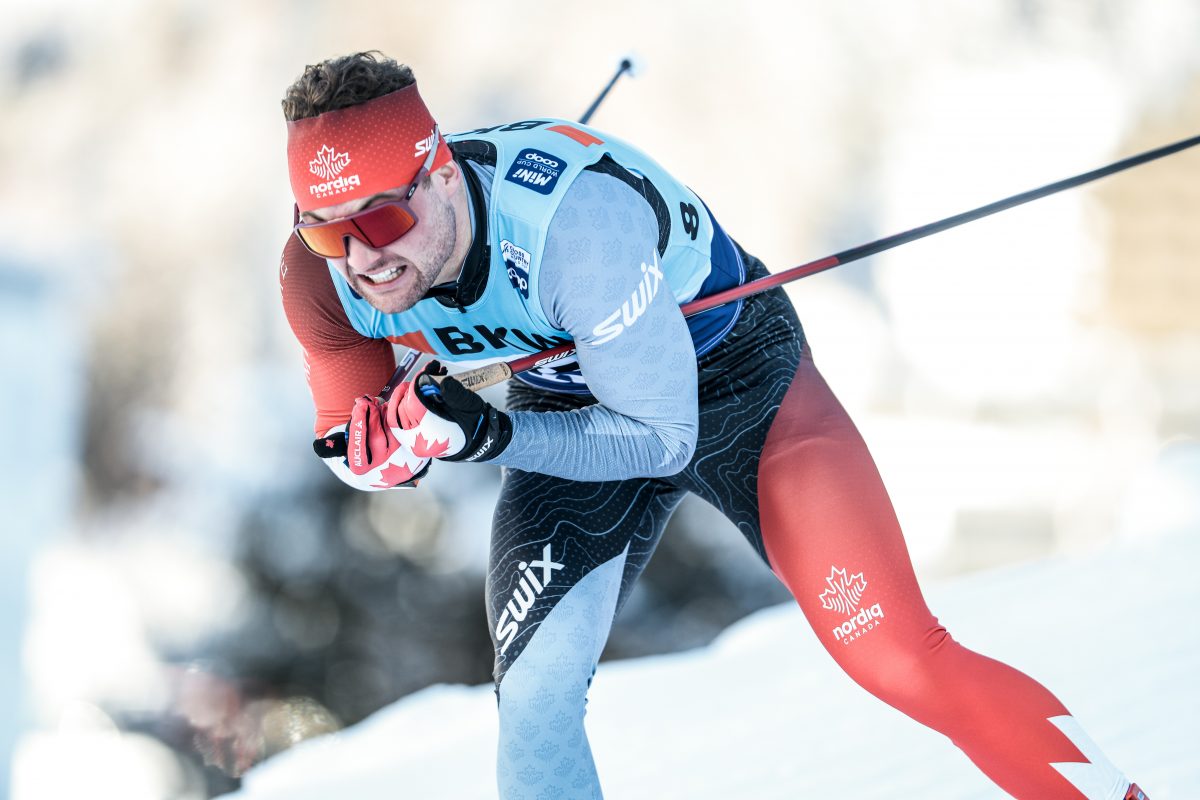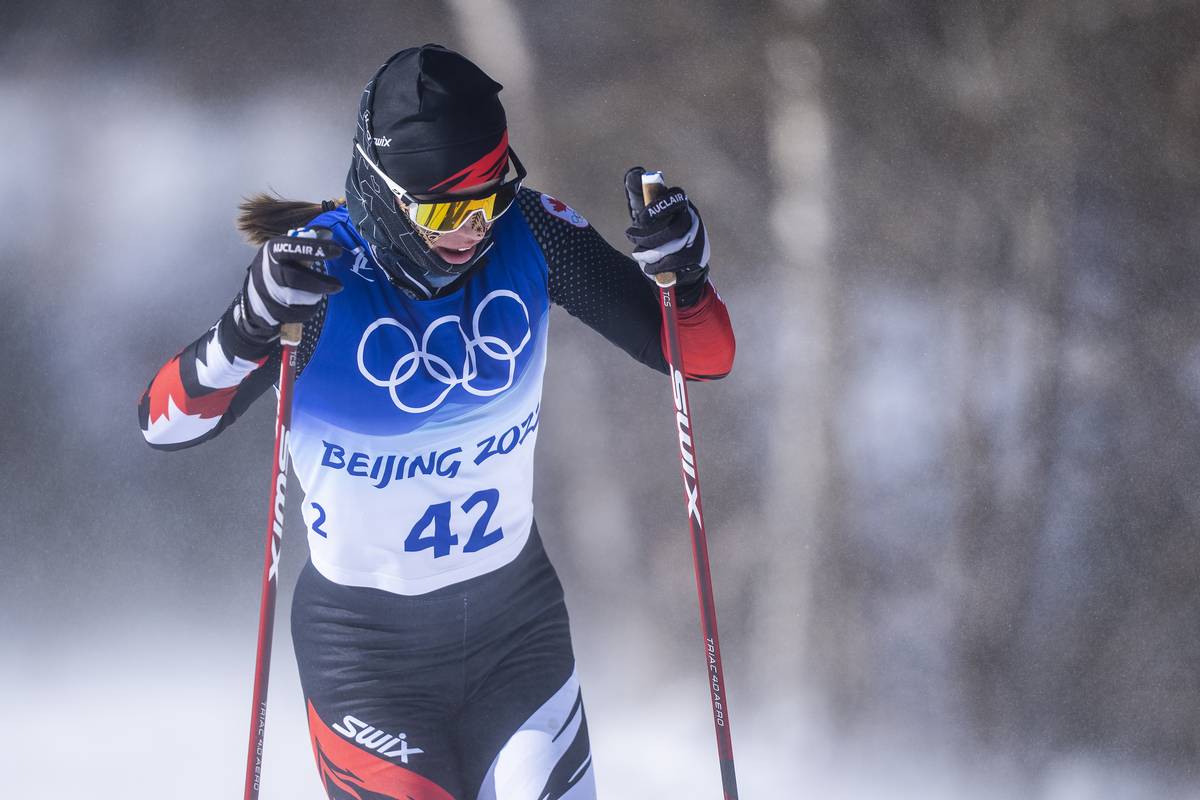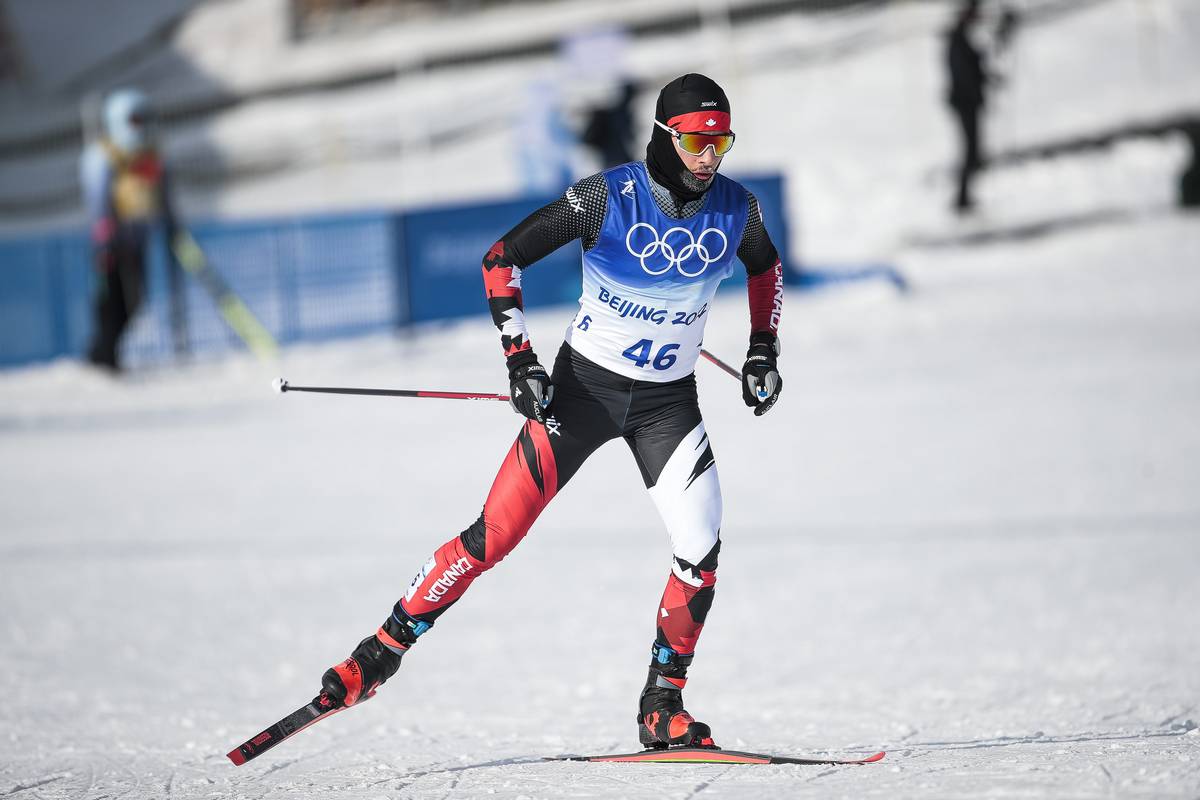
Lenny Valjas and Ivan Babikov are in, Kris Freeman is out, and the U.S. is looking forward to more quota spots for its women’s team next year
During the first period of World Cup racing, the U.S. and Canadian ski teams had plenty of notable results.
Kikkan Randall won and won again, much to the delight of the Americans. She and Sadie Bjornsen shared a team sprint podium, while Holly Brooks notched a couple of top-twenties, Simi Hamilton made the top ten, and Andy Newell found his distance legs. Rookies Tad Elliott and Ida Sargent scored their first World Cup points.
For Canada, Chandra Crawford returned to the sprint podium, while Devon Kershaw and Lenny Valjas also appeared in finals. Alex Harvey placed fifth in the very first race of the season, Ivan Babikov collected his sixth top-ten in straight-up World Cup racing, and Dasha Gaiazova her second.

All of this activity led to changes when the Period II Red Group was announced last week. For the North Americans, the biggest news was that Randall sat atop the Sprint Cup rankings. The speedy Alaskan holds a 108-point lead over Maiken Caspersen Falla of Norway.
But while Randall’s ranking is both a literal and symbolic victory, her actual presence on the list doesn’t change much – Randall was a member of both the distance and sprint Red Groups, which include the top 30 racers by World Cup points in each discipline, by the end of last season.
Instead, the major winners in the new rankings include Valjas, who joined the sprint Red Group for the first time, and Babikov, who has been in and out of the rankings but last appeared on the list in the third period of 2011.
After their top-ten performances, Babikov moved up to 23rd place on the distance list while Valjas clocked in at 29th among sprinters, sandwiched between Anssi Pentsinen of Finland and Daniel Rickardsson of Sweden.
“Having Lenny in the Red Group was a goal we had,” Justin Wadsworth, head coach of the Canadian national team, told FasterSkier.
What’s the benefit of being in the Red Group? Besides the satisfaction of a high ranking, the International Ski Federation (FIS) requires race organizers to pay the lodging and travel costs for all Red Group skiers, as well as the Continental Cup leaders.
For Canada, free rides for Valjas and Babikov won’t make much of a difference, according to Wadsworth.

“Of course it helps our budget, but not to the point where we will change anything based on it,” he said.
Red Group rankings are recalculated at the end of each period of racing and include World Cup points accrued in the previous four periods. So while Valjas had scored World Cup points on two occasions last year – in Drammen, Norway, and then at World Championships in nearby Oslo – they weren’t enough to compete with a year’s worth of points from his rivals.
At this point, Valjas has only collected points from two of the possible four periods, so if he continues to appear in sprint finals as the season continues, his ranking will almost certainly improve. His competitors will lose old points and gain some new ones, but Valjas won’t see any points erased.
For Canada, Valjas and Babikov become the fifth and sixth members of the team to have his expenses covered by FIS. Crawford and Gaiazova appear on the sprint list, while Harvey and Kershaw are ranked in both distance and sprinting. Those four have been in the Red Group since before the beginning of this season.
“We have now three distance men, three sprint men, and two sprint ladies in the Red Group, so it’s very good for our program,” Wadsworth said.
The Americans faced an opposite revelation when the new rankings were published.

Kris Freeman slipped out of the top 30 in the distance rankings for the first time since 2011 World Championships. Like Babikov, he has bounced on and off the list for several years. Most recently, Freeman had been ranked 29th for several periods. He fell behind after scoring only seven points so far this season.
The pair’s fortunes can be explained by the fact that the scoring system is top-heavy – after a race, first place nets 100 points, second 80, third 60, and tenth only 26. By the time the list reaches the 20s, 21st place only receives ten points and 30th a single one.
As a result, a single very strong result like Babikov’s seventh-place finish in Davos does more for an athlete’s Red Group ranking than consistently finishing in the twenties or even the teens. If Freeman pops a top-ten – as he has done several times in the past – he will likely rejoin the top 30, even if he doesn’t score any other World Cup points.
With Freeman’s departure from the list, only Andy Newell, who is ranked 14th on the sprint list, accompanies Randall on the FIS dole.
U.S. Ski Team Head Coach Chris Grover did not comment on what that might mean for the notoriously small team budget when reached by FasterSkier over e-mail.
But even though only two Americans appear in the Red Group rankings, there were encouraging signs on the new lists. Brooks is ranked 35th on the distance list, just 14 points behind 30th-place Alija Iksanova of Russia, and Stephen is seven points behind her in 37th.
Like Valjas of Canada, neither woman has any points from the second period of 2011, meaning that if they can continue to accrue points during the next period of 2012, they will be replacing a “zero” with something positive in the next set of rankings. That almost guarantees a climb up the list.
And that’s not all. At the end of every year, a nation’s total World Cup quota is recalculated based on how many different skiers have finished in the top thirty. For each gender within a discipline, a nation receives start rights for each athlete who had scored points at least once in regular World Cup racing, plus one more spot.
For instance, for the U.S., Randall, Stephen and Morgan Arritola scored distance points during 2011, so the American women receive four starting spots in distance races in 2012.
After a single period of racing this season, the U.S. has had three scorers in both women’s disciplines and in men’s distance skiing; two American men have scored points in sprints. With most of the season still to come, it seems likely that more athletes can notch top-thirty finishes and expand the U.S. quotas for next season.
“Only two so far in the men’s sprint, but hopefully a Continental Cup winner like Mike [Sinnott] can get in there,” Grover, the head coach, told FasterSkier. “Last year Kris took points in the Tour, which got our quota up to 4.”
Grover was particularly optimistic about the women’s sprinters.
“I am expecting that Sadie and Jessie [Diggins] might even help to get our sprint quota up to 5 for next year,” he said.
Another bonus? The overall World Cup leaders from the previous year, as well as the Distance and Sprint Cup leaders, get automatic start rights regardless of quota numbers. So if Randall hangs onto her lead in the Sprint Cup, she could compete without even using one of the five potential starting positions.
For Canada, the women’s sprint team has already expanded its quota. They currently receive three spots, but with all three of the starters already making sprint heats, their number will bump up to four in 2012.



